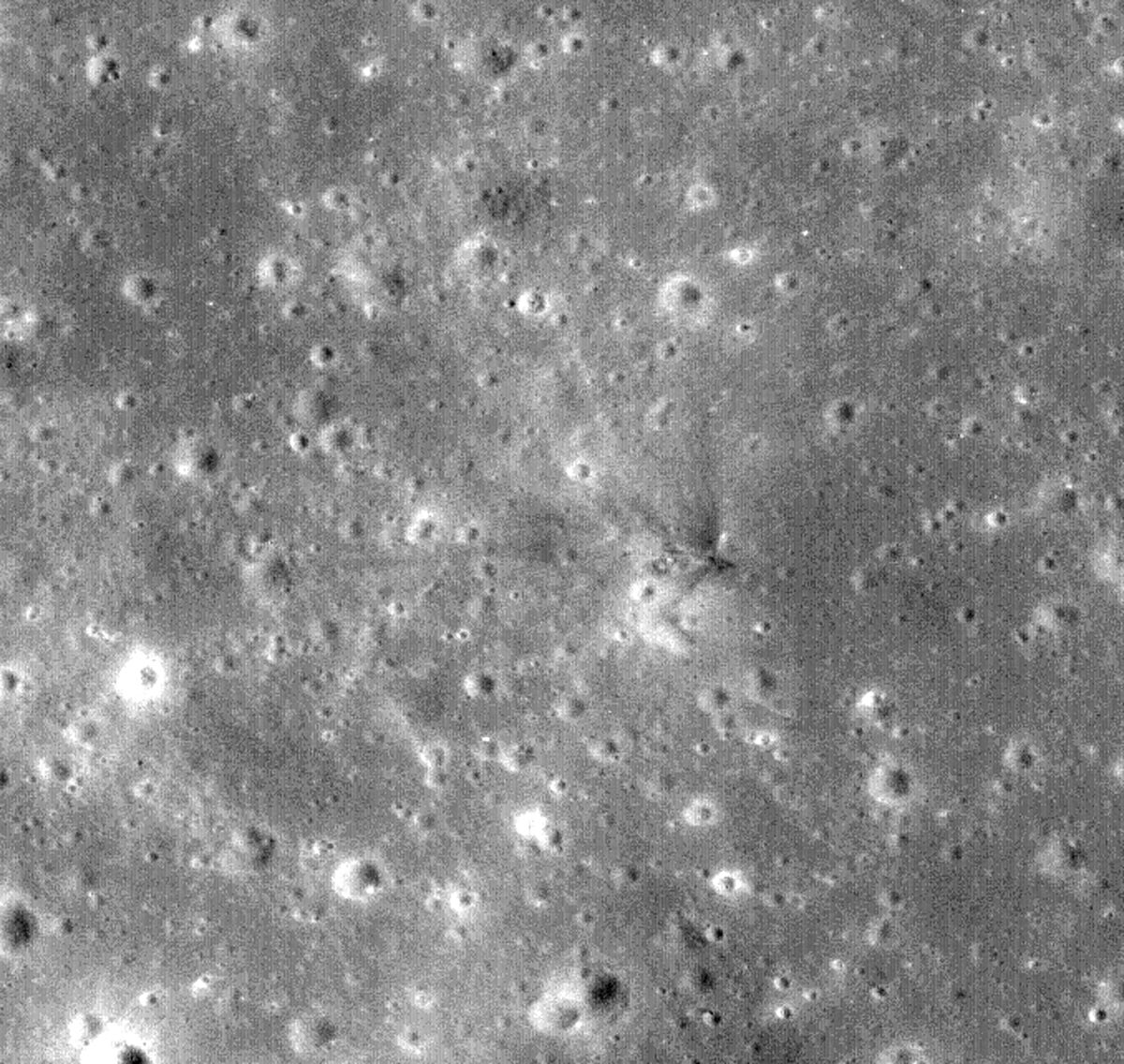The Downlink • Sep 13, 2024
Someone’s aliens
Space Snapshot

This image from NASA’s Lunar Reconnaissance Orbiter shows a human technosignature on the Moon: the landing site of the Apollo 14 Lunar Module. It’s one of the many signs of intelligent life our species has scattered throughout our Solar System, from spacecraft to radio waves. If other technologically advanced species are out there, could they be leaving similar signs of their presence?
The latest issue of The Planetary Report is all about how life on Earth contextualizes the search for life beyond our planet. You can read the entire issue for free online. Members get a hard copy of the magazine delivered to them each quarter. Not yet a member? Join today.
Image credit: NASA / GSFC / ASU.
Fact Worth Sharing

The Arecibo message of 1974 was the first human technosignature intentionally sent into interstellar space. Directed at the M13 star cluster 25,000 light-years away, the signal included information about humans, the Solar System, and the Arecibo telescope itself.
Mission Briefings


ESA’s Juice spacecraft has confirmed that Earth is habitable. The European Space Agency’s mission to study Jupiter’s icy moons tested out some of its habitability-gauging instruments on a recent flyby of Earth. The instruments seem to all be working just fine, having confirmed that our planet does indeed have the conditions required for habitability. Pictured: Earth seen by ESA's Juice spacecraft as it flew by. Image credit: ESA/Juice/JMC.

China’s Chang’e-6 spacecraft hasn’t finished its work in space just yet. After dropping off a sample it collected from the Moon for return to Earth, the spacecraft has now turned up at the second Sun-Earth Lagrange point (L2), a gravitationally stable location used by spacecraft, including JWST. The orbiter's visit to L2 could provide useful experience for China’s upcoming missions, such as the “Earth 2.0” exoplanet-hunting space telescope, which aims to launch to L2 in 2028.

The Polaris Dawn private astronaut mission is underway. A SpaceX Crew Dragon launched on Sept. 10 carrying a four-person crew into Earth orbit. Private astronauts Jared Isaacman and Sarah Gillis performed a successful spacewalk on Sept. 12, the first commercial astronauts ever to do so. The mission is planned to return to Earth on Sept. 15.

NASA will not fly its twin ESCAPADE smallsats on the inaugural New Glenn launch. The agency decided to remove the Mars-bound mission from the first launch of Blue Origin’s rocket because of concerns that the rocket may not be ready in time. NASA instead plans to launch the mission on a subsequent New Glenn launch, as early as spring 2025.

Europa Clipper is go for launch. The NASA mission to study Jupiter’s moon Europa up close and search for signs of habitability has been approved for launch next month. The first potential launch period goes from Oct. 10-31, with exact timing depending on weather conditions and coordination with other launches taking place from Kennedy Space Center.
From The Planetary Society


To look for life out there, it helps to know how it started here. One of the feature articles in the latest issue of The Planetary Report explores the concept of the last universal common ancestor, or LUCA, an ancient population of organisms from which all life on Earth evolved. By learning more about the conditions in which life first developed on Earth, we can refine our search for life elsewhere. Pictured: Hydrothermal vents deep in the North Atlantic Ocean, where life on Earth may have begun. Image credit: R.B. Pedersen/Centre for Geobiology.

With auroras stretching across more of the planet this year, it’s worth looking up. Vince Ledvina, also known as the Aurora Guy, joins this week’s Planetary Radio to discuss the science behind the northern and southern lights and what they can tell us about our Sun, our planet, and other worlds across our galaxy.

Sept. 14 is International Observe the Moon Night. Celebrate all things lunar with virtual and in-person events around the world, educational resources for people of all ages, Moon-watching tips, and so much more.

Members, we’re making some changes to our web services! The Planetary Society has recently upgraded our online services systems, which impacts members’ access to the Account Center and the Digital Member Community. If you are a member, visit our updated FAQ page to learn more and ensure you can log into everything you need.
What's Up

Saturn is still close to opposition, meaning it shines brightly as it crosses the sky from the east at dusk to the west at dawn. On Sept. 17, the Moon will be near Saturn. Overnight between Sept. 17 and 18, there will be a full Moon and a partial lunar eclipse. Reddish Mars rises in the east in the middle of the night, with bright Jupiter above it. Learn more about what to find in September’s night skies.
Find your place in space today

Planetary Society members are part of our mission to increase discoveries in our Solar System and beyond, elevate the search for life outside our planet, and decrease the risk of Earth being hit by an asteroid. Carl Sagan co-founded this nonprofit for those who believe in exploration to take action together. If you're not already a member, join today to help create a future full of space exploration.
Show off your love of space in style

The Planetary Society’s merch partner, ChopShop, has just released a new collection of button-down shirts featuring three designs, each commemorating a distinct aspect of humanity's journey into the great unknown: groundbreaking scientific discoveries, pioneering deep space probes that have ventured beyond Earth orbit, and historic rockets that carry us and our robotic explorers into the vast beyond. You can order yours now through ChopShop’s Kickstarter for the project.
Wow of the Week

Every spacecraft in orbit around our planet is a technosignature, proving to anyone who might look our way that there are intelligent beings here capable of creating space technologies. If you look up at the right time, you can see a new technosignature for yourself. Last month, NASA’s ACS3 spacecraft unfurled its 80-square-meter (860-square-foot) solar sail in Earth orbit. Even though it’s twice as high up as the International Space Station, the sail is large and reflective enough to be visible from the ground. To help you spot it, NASA has created an app that lets you track sighting opportunities based on your location. Pictured: ACS3 took this image after successfully deploying its solar sail in Earth orbit. The bottom surface is part of the solar sail, while the top is part of a solar panel. Image credit: NASA.
Send us your artwork!
We love to feature space artwork in the Downlink. If you create any kind of space-related art, we invite you to send it to us by replying to any Downlink email or writing to [email protected]. Please let us know in your email if you’re a Planetary Society member!


 Explore Worlds
Explore Worlds Find Life
Find Life Defend Earth
Defend Earth

